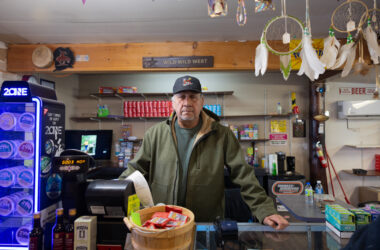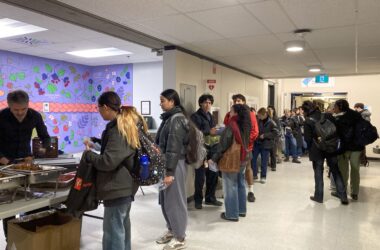 Jason Samson
Jason SamsonEarlier this month, McGill PhD candidate Jason Samson and a number of other researchers released the world’s first map of human vulnerability to climate change.
Samson, who studies climate change ecology, originally conceived of the idea while studying species adaptation to climate change. With his team, he applied similar techniques to human beings and found parts of Africa and Central America to be at the highest risk. Areas in the extreme global north and south, like Russia, Australia, and Canada, are in less danger.
“I was studying beavers and how they affect their environment,” Samson said. “I was also studying how species are affected by environment changes. We are seeing species move outside their normal range. Now we see species in Quebec we didn’t have before.”
While studying beavers, Samson came across a picture taken by NASA of the earth at night, and thought it would be interesting to see how humans are distributed across the globe and how they are affected by their environments.
“I used census data taken by governments all over, around 400,000 censuses from everywhere,” he said. “What I found is that human distribution is more related to environment than many other species like birds and trees. They tend to live in nicer climates, with very few living in the Arctic, Sahara, or the Amazon … It turns out climate is very important for where people live. “
Interestingly, some of the countries with the lowest emissions were found to be the most vulnerable to the effects of climate change.
Murray Humphries, an associate professor in natural resource sciences at McGill, is Samson’s PhD supervisor and was a co-author of the paper.
“My main role was to encourage Jason in getting and following up on ideas,” Humphries said. “Lots of work has already been done in collecting climate control data, we mostly pulled [climate data and human vulnerability data] together.”
Samson had use of a supercomputer at McGill and was able to crunch the numbers in a matter of months. On a regular computer, the task would have taken years.
Dominique Berteaux, professor and Canada Research Chair at the University of Quebec at Rimouski, was another co-author and co-supervisor of Samson’s research. As an expert on Quebec mammals, Berteaux became involved in Samson’s research early on, when he was mainly studying beavers.
“When he was studying beavers we worked together to study how climate change affected these creatures. Then [we] figured why not get involved in doing it for humans too,” Berteaux said.






